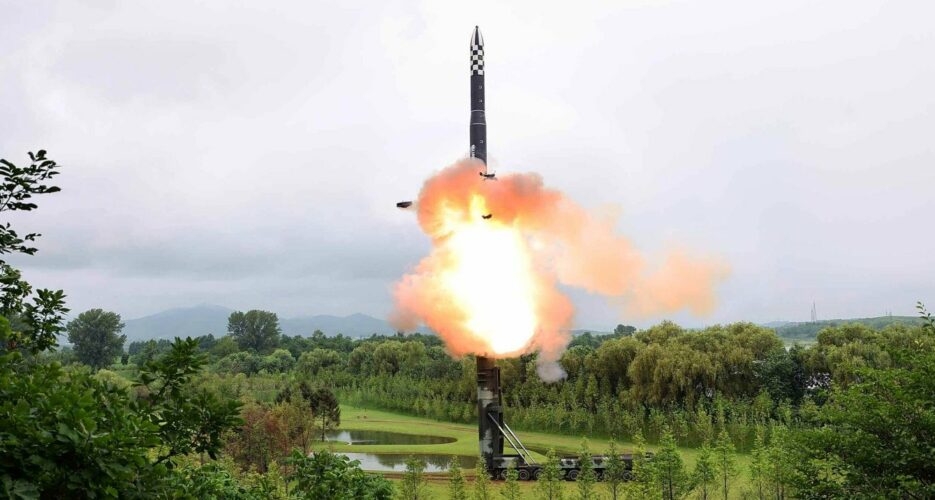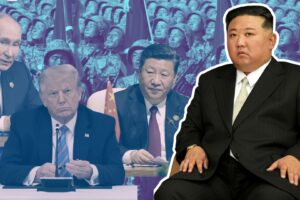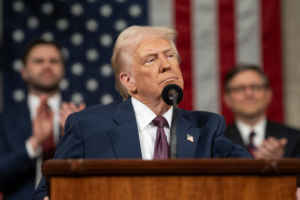North Korea successfully test-launched its Hwasong-18 solid-fuel intercontinental ballistic missile (ICBM) again on Wednesday, according to state media, calling it a show of force against U.S. “aggression.”
Leader Kim Jong Un guided the launch from a private mansion on the east side of Pyongyang, photos published by the Rodong Sinmun Thursday morning show, the same place where he oversaw the first Hwasong-18 launch in April.
North Korea successfully test-launched its Hwasong-18 solid-fuel intercontinental ballistic missile (ICBM) again on Wednesday, according to state media, calling it a show of force against U.S. “aggression.”
Leader Kim Jong Un guided the launch from a private mansion on the east side of Pyongyang, photos published by the Rodong Sinmun Thursday morning show, the same place where he oversaw the first Hwasong-18 launch in April.
Try unlimited access
Only $1 for four weeks
-
Unlimited access to all of NK News: reporting, investigations, analysis
-
Year-one discount if you continue past $1 trial period
-
The NK News Daily Update, an email newsletter to keep you in the loop
-
Searchable archive of all content, photo galleries, special columns
-
Contact NK News reporters with tips or requests for reporting
Get unlimited access to all NK News content, including original reporting, investigations, and analyses by our team of DPRK experts.
Subscribe
now
All major cards accepted. No commitments – you can cancel any time.










